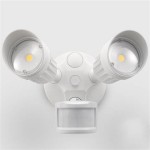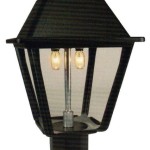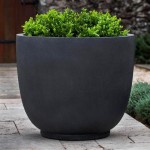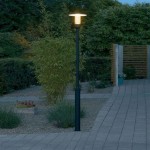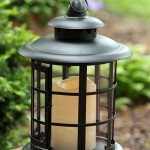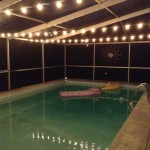Building a Homemade Outdoor Wood Burning Boiler: A Guide for DIY Enthusiasts
For those seeking a sustainable and cost-effective heating solution, a homemade outdoor wood burning boiler presents an attractive option. These boilers, often referred to as "outdoor wood furnaces" or "wood-fired boilers," utilize the heat generated from burning wood to produce hot water for heating homes, domestic hot water, or even radiant floor heating systems. While building such a boiler demands a considerable amount of time, effort, and technical knowledge, the rewards of self-sufficiency and cost savings can be substantial. This article provides a comprehensive guide to building a homemade outdoor wood burning boiler, outlining the necessary steps, materials, and safety considerations.
1. Design and Planning
The first step in building a homemade outdoor wood burning boiler is to carefully design and plan the project. This phase is crucial to ensure a safe, efficient, and effective boiler system. The design should consider several critical factors, including:
- Boiler capacity: The size of the boiler (in gallons or liters) determines the amount of heat it can produce. This selection should be based on the heating requirements of the house or other structures to be heated.
- Fuel source: While wood is the primary fuel, consider the availability and cost of wood in the local area. The boiler design should accommodate the chosen wood type (e.g., cordwood, pellets, or chips).
- Location: Choose a location with adequate space for the boiler, a safe distance from flammable structures, and access to a water source. The boiler should be situated on a level, firm surface and preferably shielded from the wind.
- Safety features: Integrate safety features such as a pressure relief valve, a temperature gauge, a safety thermostat, and a fire extinguisher. Additionally, the boiler should be placed within an enclosure to minimize the risk of sparks and embers escaping.
- Chimney height & size: The chimney should be tall enough to effectively vent combustion gases and prevent creosote buildup. The chimney diameter should be appropriately sized to ensure efficient draft.
- Insulation: Proper insulation around the boiler and its components reduces heat loss and improves efficiency.
Consider consulting with a qualified professional for guidance on design and safety aspects, especially if this is your first attempt at building a wood-fired boiler.
2. Materials and Construction
Once the design is finalized, gather the necessary materials for construction. The materials will vary depending on the specific design, but common components include:
- Boiler shell: This can be made from steel, cast iron, or even a repurposed propane tank. The chosen material must be able to withstand high temperatures and pressure.
- Firebox: The firebox, where the wood is burned, needs to be constructed with fire-resistant materials. Steel or cast iron are commonly used, with refractory bricks lining the interior for added durability.
- Heat exchanger: This system transfers heat from the burning wood to the water. The design can be simple, with pipes running through the firebox, or more complex, using a finned coil or a heat exchanger plate.
- Chimney: The chimney is essential for venting smoke and gases from the boiler. Choose a material that is heat-resistant and corrosion-proof, like stainless steel or clay tile.
- Water pipes and fittings: Use high-quality, high-pressure pipes and fittings that are compatible with the system's operating temperature and pressure.
- Insulation: Use a high-temperature insulation material, such as ceramic fiber, to reduce heat loss from the boiler and its components.
- Expansion tank: An expansion tank accommodates water expansion as it heats and prevents pressure buildup in the system.
- Circulation pump: A circulation pump helps move hot water through the system to the radiators or other heating components.
With the materials gathered, the construction process begins. This involves assembling the boiler shell, firebox, heat exchanger, and chimney, ensuring proper sealing and insulation. The construction requires a high level of precision and attention to detail.
3. Installation and Testing
Once the boiler is constructed, it's time for installation. This involves connecting the boiler to the water system and heating components. The installation process requires careful planning and meticulous execution.
- Connect the boiler to the water system: Connect the boiler's inlet and outlet pipes to the water system, ensuring a secure and leak-proof connection.
- Install expansion tank: Install the expansion tank and connect it to the water system to accommodate water expansion and prevent pressure buildup.
- Install circulation pump: Install and connect the circulation pump to the water system, ensuring it is properly sized for the system's flow rate.
- Install safety features: Ensure all safety features, including pressure relief valve, temperature gauge, and safety thermostat, are installed correctly and functioning properly.
- Initial testing: Before using the boiler, conduct a thorough test run to ensure all components are working correctly and no leaks exist.
After installation, the boiler is ready for use. However, it's crucial to follow the manufacturer's instructions and local regulations regarding operation and maintenance.
Building a homemade outdoor wood burning boiler requires significant commitment and technical expertise. This task is not for the faint of heart, but for dedicated DIY enthusiasts willing to invest the time, effort, and resources, it can offer an effective and sustainable heating solution with potential cost savings.

Plans How To Build A Wood Burning Outdoor Furnace Stove Outside

Plans How To Build A Wood Outdoor Boiler

Plans How To Build A Wood Outdoor Boiler

Homemade Wood Boiler Plans Complete Step By Guide Outside Stove Outdoor Burner Furnace

A Out Side Wood Stove That Works Great Outdoor Furnace Burner Burning

Plans How To Build A Wood Outdoor Boiler

Making An Outdoor Wood Furnace With Bob Part 1

Outside Wood Forced Air Furnace Outdoor Burning Burner

I Built A Forced Air Outdoor Stove Arborist Chainsaw Tree Work Forum

Let S Learn How To Make Your Outdoor Wood Furnace More Efficient
Related Posts
